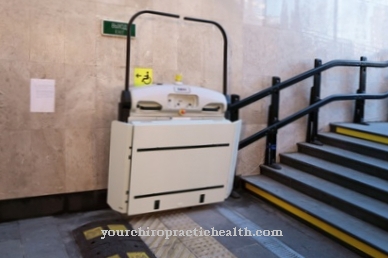The right medical work clothing is an important aspect of infectious disease prevention. As a barrier between patient and staff, it protects both sides from harmful pathogens and injuries. There are a variety of different dress codes and just as many styles of clothing. Correct use and proper hygienic application are therefore very important in everyday medical practice.
What is medical workwear?

Medical work clothing includes all types of work clothing that is worn in the medical field. It is designed differently depending on the area of application and thus the area of responsibility. The work clothes can consist of several parts or rarely be one-piece. Modern medical work clothing usually consists of a top and pants.
The main task of workwear is to protect against infection. Medical work clothing is used in different areas. Most of the clothing is used by the nursing staff. This is followed by medical staff and functional diagnostics staff. The latter includes, for example, x-rays, endoscopy, sonography or radiation therapy. Nurses and nurses work in hospital wards. In the medical service, clothing is needed for use on the ward, in functional diagnostics, in intensive care medicine or in the operating theater.
Medical work clothing is worn by all groups of medical personnel and is mandatory in almost all clinical facilities. Psychiatric facilities are an exception. As patients need help with body care much less often, some psychiatric clinic wards do not wear special protective clothing.
Shapes, types & types
The areas of application for medical work clothing are very diverse. Many different types of clothing are used, particularly in the clinical sector. The so-called area clothing is often mentioned. This is work clothing that differs from application to application. The reason for this, however, is basically not industrial hygiene, but the ability to recognize different areas of responsibility. For example, operating theater underwear, uniform intensive care clothing and nursing ward clothing are separated from one another.
Green clothing is traditionally worn in the operating theater in hospitals. In intensive care, the staff often also wear green, light green or blue, and the other nursing and medical staff wear white. This delimitation clearly separates areas from one another. There is a certain recognition effect.
In addition to the area clothing, there is also additional clothing such as doctor's coats. These were originally intended as hygienic protective clothing for patient visits. Today they are mostly worn continuously. The gown is only removed in the functional and diagnostic area or in the operating room.
The doctor's coat is certainly the best-known item in the workwear range. However, in addition to such work-related items of clothing, there are also general protective clothing. This includes, for example, the infection protection clothing that must be worn in the isolation area by both the nursing staff and the medical staff. Disposable gowns can also be used, but also washable clothing. It is used both for isolation, i.e. the demarcation of infectious patients, and for reverse isolation, the protection of immunocompromised patients.
Structure & functionality
The structure of medical clothing systems depends on the area of application. The most common form is a combination of top and pants. This type is used today in almost all clinics, especially in the care sector. Some hospitals are still using the nursing gowns that were more common in the past. Denominational houses in particular sometimes still offer this clothing.
Ordinary care clothing is usually white. Colors are sometimes used to differentiate between cleaning staff or employees in the functional departments. Sometimes there is only one colored insert - for example on the collar - as a distinguishing feature. In some clinics, for example, pediatric nurses wear a top with a pink insert, in contrast to the blue or white of the other carers.
The standard top in care is the so-called tunic or shirt. This is a buttonless top that can simply be pulled over. Only underwear or undershirt is worn underneath. Such tunics have two to three pockets. There are two large pockets at the bottom right and left of the front. They are used to store notes, writing materials, beeps or other clinical communication devices. Sometimes a breast pocket is also sewn on, which can be used to attach the name tag, for example.
Because of the high throughput, work clothes are changed daily in nursing and are usually not individualized. This means that names on simple care clothing are no longer used in most of the larger clinics. It looks different with doctor's clothing. Since doctor's wardrobes and wardrobe clothing are changed less frequently and generally less clothing has to be provided for fewer employees, these are often provided with a "name tag". For doctors there is also often a change of clothes, for example for work in functional diagnostics or the operating theater. The station clothing is therefore often used less.
In general, different items of clothing are available for doctors than for nursing and functional personnel. While X-ray assistants and nurses often wear the same clothing, just differently colored, there is usually extra clothing for doctors. A so-called visit shirt, which is cut differently for women and men, can be worn under the wardrobe. This is generally not the case with care clothing. The trousers for nursing staff are also often very simple and do not have pockets or buttons. Instead of a fastener, there is usually just a continuous fastening strap without cuffs. However, this makes it easier to wash. Doctors' clothing, on the other hand, is often a little more sophisticated, made of coarse fabric and still has buttons, pockets and a fly.
Medical & health benefits
The most important task of medical clothing is without a doubt to protect patients and staff. The clothing is primarily intended to protect against soiling of the skin. If the term clothing is extended to include shoes, there is also the fact that these must protect against stab injuries, for example from a falling syringe or surgical equipment.
Thanks to its high durability and washability, area clothing also makes a contribution to the profitability of a clinic. Avoiding disposable clothing is an important point here. Because when using area clothing in combination with disinfectable reusable outerwear, this can completely replace the disposable variant. The same applies to the area and functional clothing of doctors and functional employees. In addition, clothing should protect against body secretions to a greater extent. That is why it covers larger areas of the body - a surgical gown without sleeves would be unthinkable. In the care sector, however, short-sleeved clothing is used, if only because of the constant forearm and hand disinfection.
So, in general, clothing protects those who wear them, those who are cared for by them and, if they are used sustainably, the environment as well.



























